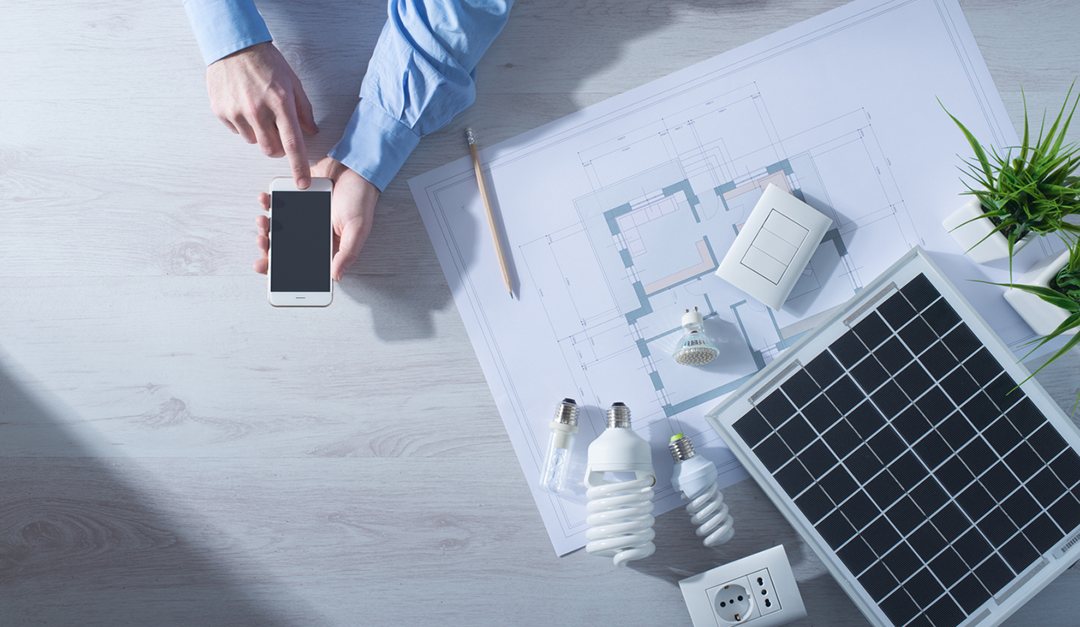In design and home life, green continues to gain momentum, and it can be a lucrative niche for real estate agents. Beyond the benefits of making homes more sustainable and reducing our footprints on the world, new designs and increasing demand is making green technology, in some cases, cheaper than traditional methods. Now green is a benefit on even more levels than before. This, combined with other benefits, is making “green” more attractive than ever.
Here’s a look at what’s new and what’s improving in the way of green.
Smart Homes
Smart homes are becoming the norm both in home renovations and new construction. Voice activated and app directed commands allow you to schedule indoor and outdoor lighting as well as heating, cooling, watering and washing—allowing you to take advantage of non-peak hours and control electrical usage while out of town. Even items such as automatic closing drapes and sunshades work to keep our lives more comfortable and profitable in the long run.
Deconstructed Design
Not to be confused with Deconstructivism (asymmetrical architecture and design), deconstruction is a concept that utilizes recycled raw materials. This new trend is toward more authentic, natural materials such as exposed wood, metal and brick. It is an exposed style of un-building reminiscent of Frank Gehry in the ’90s, but with a more refined and green edge to it through its emphasis on reuse, salvaged and donated materials. And by mixing in more green materials such as quick-growing bamboo, you can even add “newer” natural materials to the mix.
Better Energy Generation and Storage
Smart tech is making life easier, cleaner and cheaper. More efficient batteries are making electrical storage more effective, while microgrids allow you to use and buy electricity from off-grid sources, making it easier to take advantage of more clean energy than ever before. Additionally, solar technology, and the selling benefits they provide, make electricity increasingly cheaper for you as a homeowner. Though it requires an initial investment, the continued trend in solar technology is making it equal and even cheaper than traditional energy, ensuring it pays for itself and then some.
Prefab Home Designs
The focus on prefab, modular style homes continues, providing many benefits. Prefab homes are produced in closed settings, away from the elements that keep production times reliable and materials from getting damaged by weather. And increased focus on computerized cutting and standardized sizing allows for maximum usage of materials, resulting in less waste. Since the designs are made to ship, there is special attention placed in durable construction. And with an increased focus on shipping cargo containers in design, there is less container waste in the environment along with the added durability these containers provide.
Tiny Home Additions
These homes have benefits such as fewer materials, less energy and less waste than traditional homes, making it easy for you to create zero environmental impact. They function in ways beyond daily living working great as vacation cabins, guest quarters, pool houses and home offices. And one of the attractions of tiny homes is their ability to avoid permanent footings that allow them to retain a portability designation for financial savings.
McKissock Learning is the nation’s premier online real estate school, providing continuing education courses and professional development to hundreds of thousands of real estate agents across the country. As part of the Colibri Real Estate family of premier education brands, McKissock Learning, along with its sister schools Colibri Real Estate, Superior School of Real Estate, Allied Schools, The Institute for Luxury Home Marketing, Gold Coast Schools, The Rockwell Institute and Hondros Education Group, helps real estate professionals achieve sustainable success throughout each stage of their real estate career. Learn more at mckissock.com/real-estate




